We explain everything about the Colonization of America, the distribution of the territory between the European powers and its main characteristics.
Colonization of America
The European colonization of the American continent was a historical process of appropriation and occupation of the overseas territories recently "discovered" by Columbus in 1492, by the great European powers.The main stakeholders in the division of the so-called New Continent were the Spanish Empire and the Portuguese Empire, and later the British Empire , the Kingdom of France and the Netherlands. There were also much smaller initiatives from Germany , Denmark, Sweden, Russia, Italy, and Scotland.
This process began at the end of the 15th century and culminated in the numerous American Wars of Independence of the 18th century that gave rise to a group of young autonomous republics, whose destiny was to become the current American countries.
In general terms, colonization of the American continent is understood as the set of two different stages:
- The Conquest of America. Period of violent confrontations between the European invaders and the different and numerous American aboriginal peoples, such as the Aztec Empire or the Inca Empire , among many others.
- Colonization proper. During which a colonial society dependent on Europe was founded and structured on the basis of well-defined racial classes: blacks, Indians and whites.
The bloodiest genocide

The arrival of the European colonists to America was not exactly in peace . They came in search of new territories to annex to their different empires, thirsty for new riches and in open competition for world supremacy.
The different kings legally administered the permits for the conquest , which were financed by the insurgent bourgeoisie of the time and which basically consisted of military occupations and the forced foundation of the first European settlements on the continent.
This implied, of course, subjugating the different aboriginal nations that resisted looting , if not simply eradicating them or reducing them to reserves, as in the case of the British conquest. To this must be added the weakness of the native peoples in the face of smallpox and the different diseases that the Europeans brought with them, whose consequences were felt beyond the end of the war, as well as their systematic annihilation in forced labor imposed by their conquerors.
The total victims of the invasion of the American continent are estimated at about 70 million dead , the largest slaughter in the history of mankind.
-
Incorporation of slavery
These individuals were uprooted from their lands and sold to European colonists and landowners to start the exploitation of the various economic assets that abounded in the New Continent, whether agricultural, mineral and fishing.
The black slaves lacked all kinds of rights and were subject to the will of their white masters, while the Indians occupied a state of semi-slavery called serfdom, charged with domestic and exploratory tasks. None, however, was considered a free individual, nor did he have the right to property or property.
The division of the continent
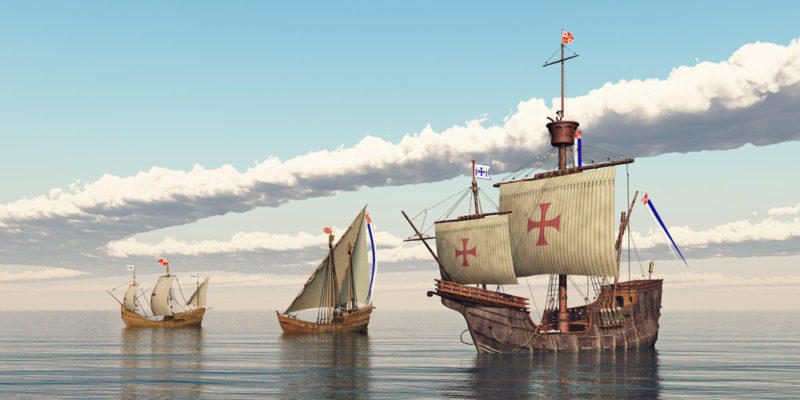
Broadly speaking, the distribution of the American territory among the main European powers was as follows:
- The Spanish colony. The first and most extensive of all, mostly occupied the territory of present-day Latin America, from the Río de la Plata to the Mexican territories, including part of the Caribbean and the Antilles. This territory was divided into four great viceroyalties: the Viceroyalty of New Spain , the Viceroyalty of Peru, the Viceroyalty of New Granada and the Viceroyalty of Río de la Plata.
- The Portuguese colony. It encompassed in its entirety what is now Brazil , divided into fifteen captaincies of almost two hundred and fifty kilometers wide each, granted for life and hereditarily to Portuguese nobles in charge of its commercial exploitation. In 1549, however, the King appointed a Governor General for the entire colony.
- The British colony. more dispersed in the origin of its colonists, it established itself in North America in open competition with the French through the first thirteen colonies, constituted by successive waves of immigrants and their black slaves between the seventeenth and eighteenth centuries. After defeating France in the Seven Years' War (1756-1763), the English assumed total control of the territory of the North American continent. They also had influence in the Antilles and the Caribbean.
- The French colony. It settled in North America, more specifically in Quebec and other territories of present-day Canada, but also in important coastal strips of what is now the United States, as well as some islands of the Antilles. Many of these Antillean colonies were overwhelmingly black, as a result of the colossal movement of slave labor.
- The Dutch colony. It was quite minor compared to the previous ones, but it had important settlements in North America (present-day New York was initially a Dutch New Amsterdam), Brazil and the Lesser Antilles (Curaçao). However, the life of its colonies was rather short-lived.
-
The expansion of the Catholic Church
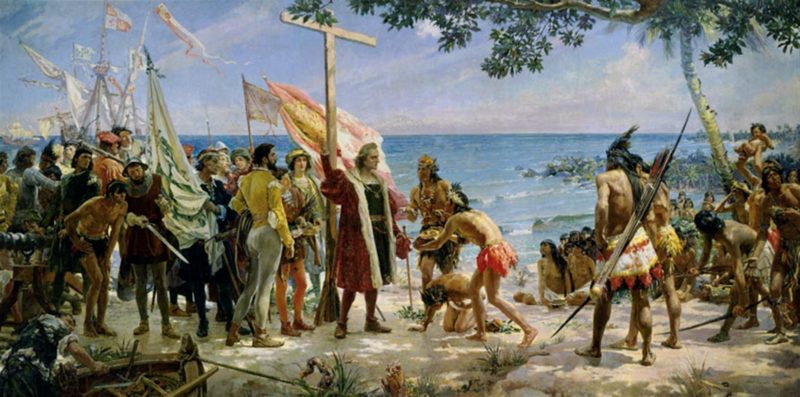 One of the strongest marks of the Spanish colonist was his rabid anti-reformist Catholicism , a product of the exclusion of Spain from Renaissance philosophies during the Reconquest (722-1492) against Islam .
One of the strongest marks of the Spanish colonist was his rabid anti-reformist Catholicism , a product of the exclusion of Spain from Renaissance philosophies during the Reconquest (722-1492) against Islam .This determined that the Catholic Church played an important role in the conquest , as a moral and cultural arm of the Spanish imposition on the American peoples. The principle of "Lands for Christendom" or of winning souls for the Church , justified the principle of violence as a mechanism of forced conversion.
In all fairness, it should also be noted the papal bull Sublimis deus , promulgated by Paul III in 1537, which affirmed the right of the indigenous to freedom and to receive a Christian education. This protected the decimated indigenous population from the brutalities of slavery , but not from the cultural imposition that prohibited their customs and sentenced most of their languages to extinction.
Besieged by the Protestant reform of northern Europe, the Catholic Church found in the conquest of America and in the predominant role that, together with its Holy Inquisition, played in the order of the nascent colonial society, enough oxygen to survive to this day.
The myth of El Dorado
The inordinate ambition of the Spanish conquerors, who used to be ordinary citizens seeking their fortune in the Americas to return to an improved position in Europe, often led them to believe in legends of uncertain origin, regarding cities made all of gold and silver and other riches.
These imaginary cities were called the El Dorado Indians , and many expeditions were lost following their supposed trail in the jungles of the Amazon.
-
The start of globalization
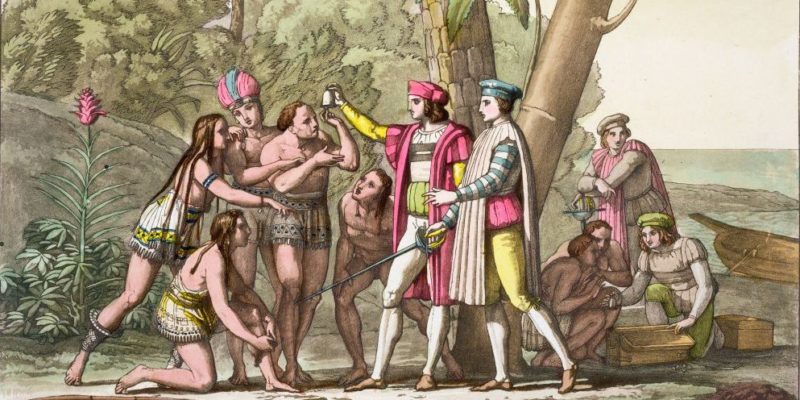 The conquest of the American territory, rich in resources and in exploitable territory, and even more so the subsequent constitution of a colonial society, legally dependent on Europe but much more vital economically, laid the foundations for intercontinental trade and many companies. exploitation of products that ensued.
The conquest of the American territory, rich in resources and in exploitable territory, and even more so the subsequent constitution of a colonial society, legally dependent on Europe but much more vital economically, laid the foundations for intercontinental trade and many companies. exploitation of products that ensued.This became particularly notable after American Independence , when the young nations became the largest and closest sellers of raw materials to the West , a role they still occupy, displacing even trade with India and the eastern colonies.
The miscegenation
Colonial society upheld its racial norms until the end of its days , but that never meant that there was no contact and syncretism between the races. It was common in colonial Brazil for Portuguese settlers to take indigenous wives and generate offspring difficult to catalog, the same as Spanish masters did with their black slaves, giving rise to families parallel to that of their European marriage. English settlers, on the other hand, mostly Puritans, were always reluctant to mix.
It was necessary, then, new designations for the resulting mixtures , whose most arbitrary term would be that of "brown", a category in which everything that was unclassifiable and suspiciously mixed entered.
Just like the racial distinctions, the cultural ones were not as sharp as it might seem , and the prolonged coexistence between the races led to a growing syncretism, the result of which is the cultural melting pot that today characterizes Latin America .
-
The colonial class society
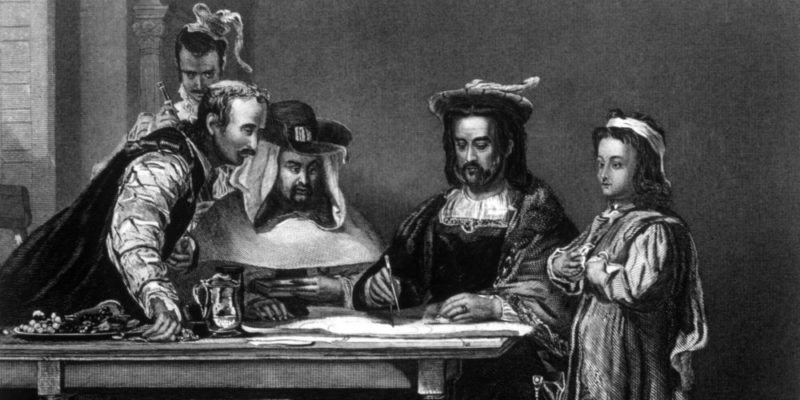 Although racial distinction was key in the distribution of rights during the colony , with a practically zero margin of social mobility, it was participation in manual labor, something very frowned upon according to the prevailing Catholic doctrines, that separated the elite of the lower classes .
Although racial distinction was key in the distribution of rights during the colony , with a practically zero margin of social mobility, it was participation in manual labor, something very frowned upon according to the prevailing Catholic doctrines, that separated the elite of the lower classes .In this way, colonial society was made up, in the first place, of a minority white and European upper class that held the positions of state civil servants or engaged in trade through large production plants with slave hands. Second, by an indigenous serfdom and a varied mestizo sector that occupied an intermediate commercial position, and finally the black, mulatto or zambos slaves, in charge of mining, agricultural and labor tasks.
This system of inequalities was key to sowing the seeds of the liberating rebellion that, in many cases, offered the possibility of a heterogeneous society of free and equal citizens.
Regions not controlled by the conquerors
Some areas of more difficult access or more questionable survival, such as the Amazon rainforest , southern Patagonia, the Gran Chaco and the deserts of northern Central America, could never be reduced to the control of Europeans.
Thanks to this they remained, and some still do today, as the last bastions of pre-Columbian societies on a continent that was taken from them.
-
Discrepancies around the term
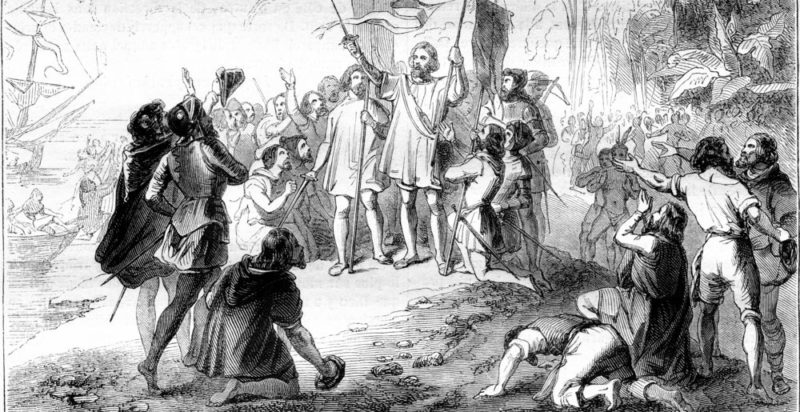 Believe it or not, there are still conflicting positions regarding the way in which the American conquest and colonization should be named and remembered. Indigenous movements and aboriginal memory movements have fought for the visibility and recognition of the massacre of native peoples, against euphemisms such as "the meeting of two worlds" or " the day of the race ."
Believe it or not, there are still conflicting positions regarding the way in which the American conquest and colonization should be named and remembered. Indigenous movements and aboriginal memory movements have fought for the visibility and recognition of the massacre of native peoples, against euphemisms such as "the meeting of two worlds" or " the day of the race ."The term "discovery" has even been questioned to name the arrival of Columbus to the Americas in 1492, given that there were already societies occupying that territory and that, on the other hand, the Viking peoples had already visited eastern Canada in earlier times.
The truth is that the debate around the term continues, evaluating the cultural contributions and the rapid modernization that the conquest imposed on the continent, but also the enormous human cost that this entailed.
The above content published at Collaborative Research Group is for informational and educational purposes only and has been developed by referring reliable sources and recommendations from experts. We do not have any contact with official entities nor do we intend to replace the information that they emit.
MA student of the TransAtlantic Masters program at UNC-Chapel Hill. Political Science with a focus on European Studies. Expressed ideas are open to revision. He not only covers Technical articles but also has skills in the fields of SEO, graphics, web development and coding. .
Leave a reply
Your email address will not be published. Required fields are marked *Recent post

Sport: What Is It, Types, Risks, Features, Characteristics and Examples

Dogs: Emergence, Features, Characteristics, Feeding and Breeds

Story: Definition, Elements, Structure, Features and Characteristics

